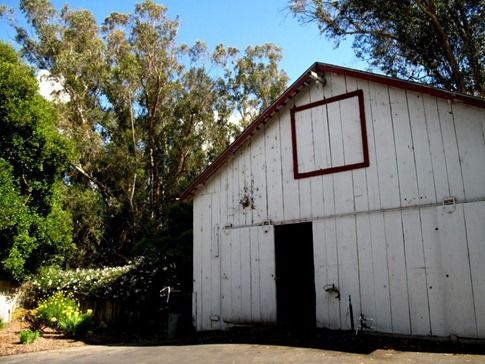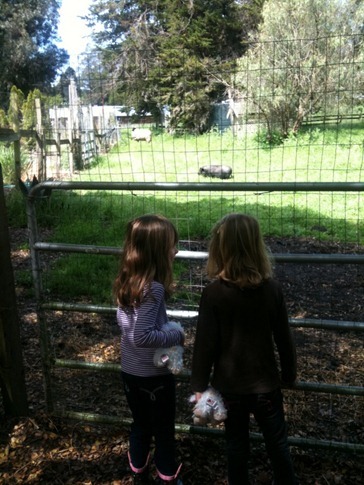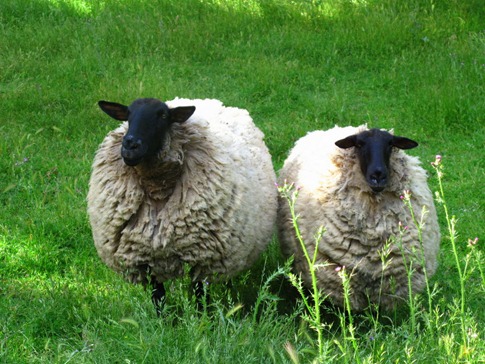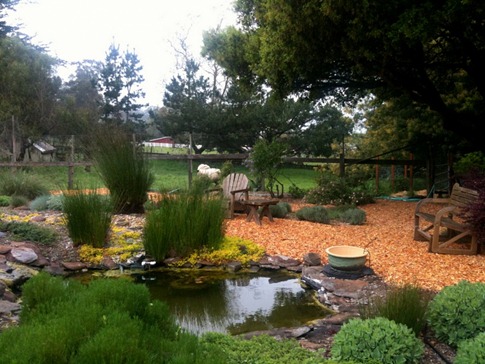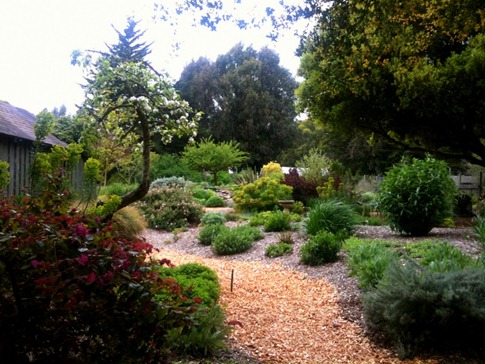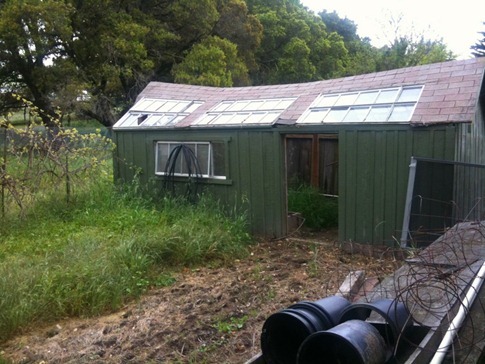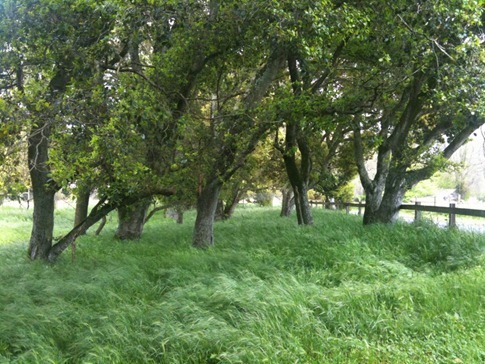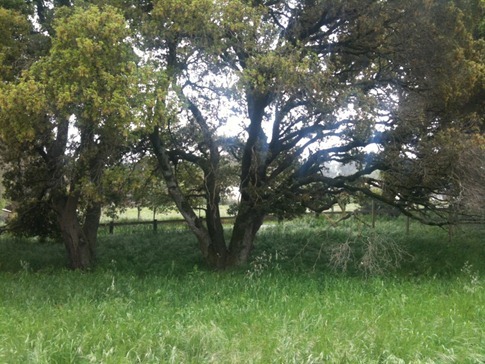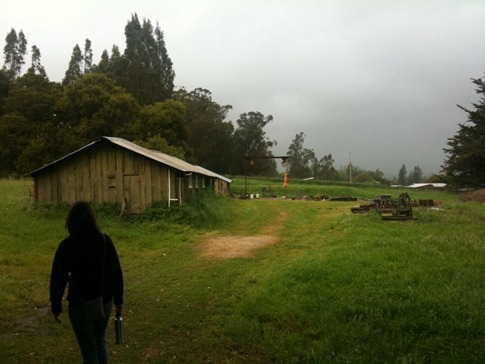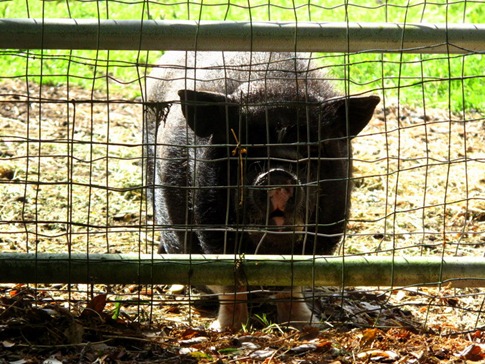On one hand, it happened really fast. On the other, we’d been thinking about it pretty much non-stop since Costa Rica. Browsing the online real estate sites, we’d seen everything from 100 acre unbuilt parcels to cookie-cutter mini-mansions with a manicured acre out back but not a lot in between. What we were looking for had a few names: hobby farm, gentleman’s farm, micro farm, homestead.
One of the first tasks was figuring out how big an acre was. We were able to determine that our house in the city was on .05 acres. Turns out, an acre is roughly 44,000 square feet or a 210 by 210 foot square. What does that mean? Most of the way across a football field. How far the average golfer can hit with a driver. A 20 story building on its side. And of course, from your driver’s test, the distance traveled in 4 seconds at 35 miles per hour. So based on some complicated computations – primarily how much land we thought might be enough to justify buying a tractor or at least a ride on mower – we came to the conclusion that we wanted at least 2 acres. I immediately started considering how many cup holders I would need, though in hindsight, I may have been getting a little ahead of myself.
We did a lot of driving around the small rural towns within an hour or so of San Francisco, some I’d spent time in having grown up in the area and some I’d only seen on maps, and got pretty familiar with the Realtor.com iPhone app. Sonoma and Sebastopol were two of our favorite towns, though the former was a bit stodgy and the latter a bit hippy (and far). In the end, we came back around to Petaluma. It just had the right combination of a small town feel with the amenities of a medium sized city. Ann and I had driven the 45 minutes up to Petaluma for the past few years with my Mom to help her get her Christmas tree from one farm she really likes, and each time we passed through the historic downtown, we’d comment that it was a place we always wanted to spend more time. Plus, its location made it a great central spot for exploring west to the coast, east to Wine Country, north towards the redwoods and south to the City.
There were a few listings in Petaluma we’d seen online but hadn’t had a chance to tour, so I called up a friend from high school who is a local real estate agent. She’d helped us buy our house in the city four years before, and we’d found that the hardest part about working with her was remembering to call her Elizabeth in front of the other agents rather than her high school nickname, “Biz.” She understood completely what we were looking for: someplace that had all the components but wasn’t “done.” We wanted to be able to put our own style and sweat equity into it but didn’t want to pay for someone else’s questionable ideas.
Once through the sagging galvanized ranch gate with a viney overgrowth of assorted wire fencing patching the holes, the driveway opens up. To the right, the closed door of a two car garage with purple wisteria clusters framing the entrance against the tan wooden siding divides two paths leading around to sparse decks on the front and back. To the left, a high peak and hay doors rise above the two sliding doors of the barn, white trimmed in a deep red. There are boards on the exterior of the barn that are over 16 inches wide and could only have come from old growth coastal redwoods. They proudly wear the scars from a long-defunct sawmill blade that must have been as tall as I am. Inside, the floor slopes queasily and the ladder creaks as I peek into the loft and am greeted by a starscape, tiny beams of light sneaking through the gaps between the wood and holes left by nails that have long since turned to rust.
We’re naturally drawn along a woodchip path towards another galvanized gate where we’re greeting by a motley menagerie of two sheep that look like popped kernels of corn and a knee-high potbellied pig ringed with coarse black hair that leaves a bald-spot of flakey black skin on top. The pig is happy to see us but the sheep prefer to keep their distance.
Alongside the pasture is a stunning landscape of lavenders, fruit trees and tufts of tall grasses and a meandering path freshly dusted with yellow wood chips. At the center is a stream lined with small river pebbles that empties into a small pond before a pump recirculates the water for another ride. Weathered teak chairs are arranged in country vignettes, lounging in shady nooks or soaking up the sun, practically begging for someone to leave a sweating glass of lemonade on their armrests.
Through a rickety gate, a wire fence surrounds a twelve foot square garden extending from a small greenhouse. The roof looks like it’s been used as a rocking horse by an overgrown kid playing cowboy but the weeds inside seem to be enjoying the heat. Backtracking under trellises bursting with roses, a path leads under the dense cover of mature trees where rhododendron, camellias and ferns enjoy the coolness.
We only briefly walked towards the back of the property, 4 acres in all, but were excited by the mature oak trees and two converted chicken houses that had been rented out as workshops. Before we even stepped into the house, looked out the window of the simple kitchen at the tree house cobbled into a twisted buckeye tree, walked up the stairs to the 4 small bedrooms and a bath off a central hallway, we felt like we’d found the place.
We quickly put together an offer and within days had it accepted, with one counter; the sellers wanted us to keep the pig and the sheep. Over the next weeks, we scheduled a barrage of pre-sale inspections: structural, well, septic, chimney. Though selling agents will often recommend inspectors who know how to sugar-coat their reports so the deals don’t fall through, we found our own independent inspectors. These guys need to cover themselves and usually go to great lengths to find every possible problem, so we were pleasantly surprised when the issues that arose were moderate. Though the chimney inspector at first seemed to think that a stiff wind might take ours down, insisting on saying that it was not “integrous” to the house no less than 13 times in our conversation, a mason he recommended later confirmed that it could be repaired. And despite a fair amount of giggling when the septic guy said the outflow pipe might be clogged “due to” root intrusion, the feeling was that the system was functional. We asked for a little money back from the sellers to remedy these issues and, after going back and forth on whether we were quite ready for livestock, ultimately agreed to keep the sheep and the pig. We were in contract to buy the farm.
How can I say no to that face?

